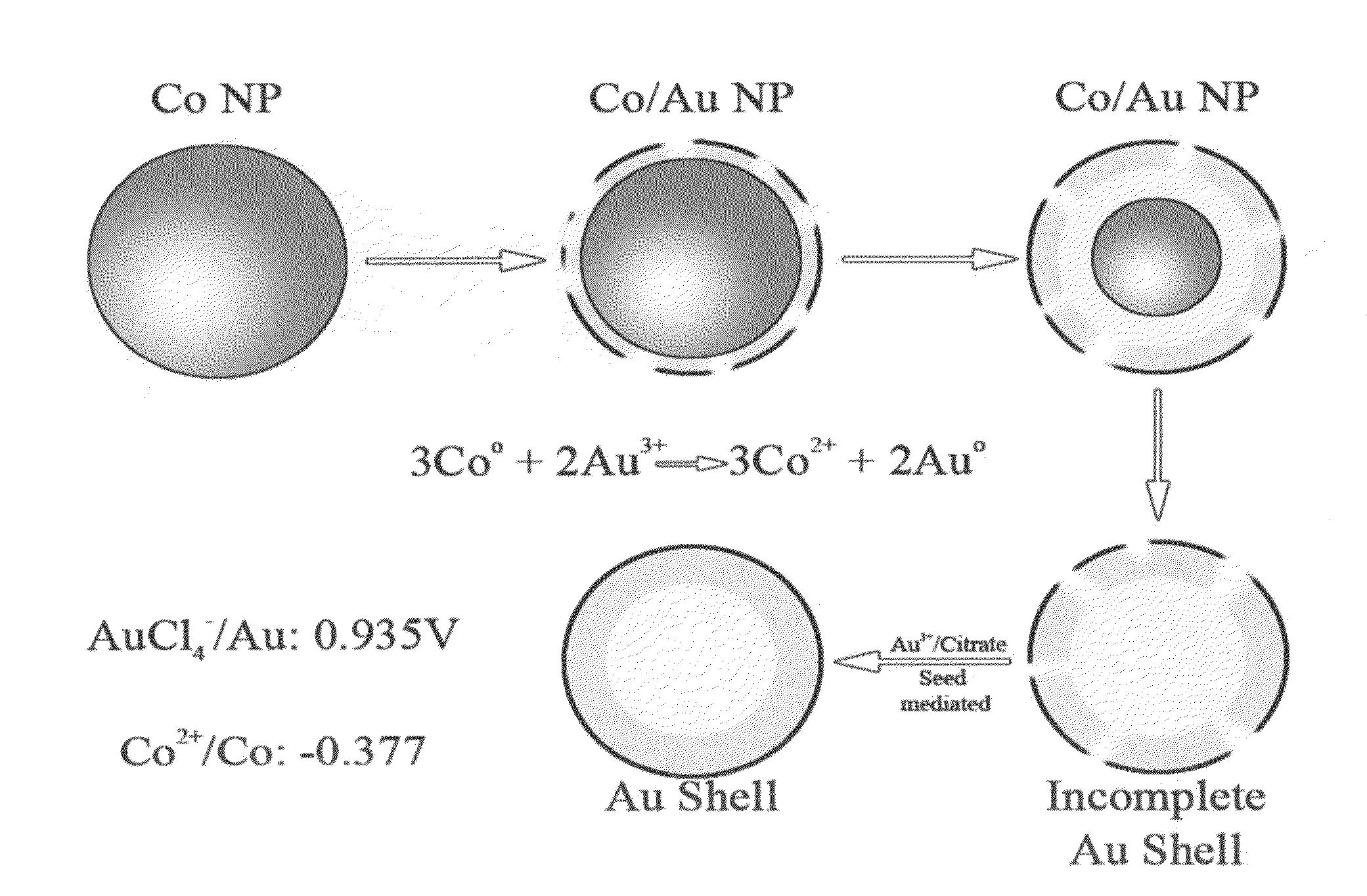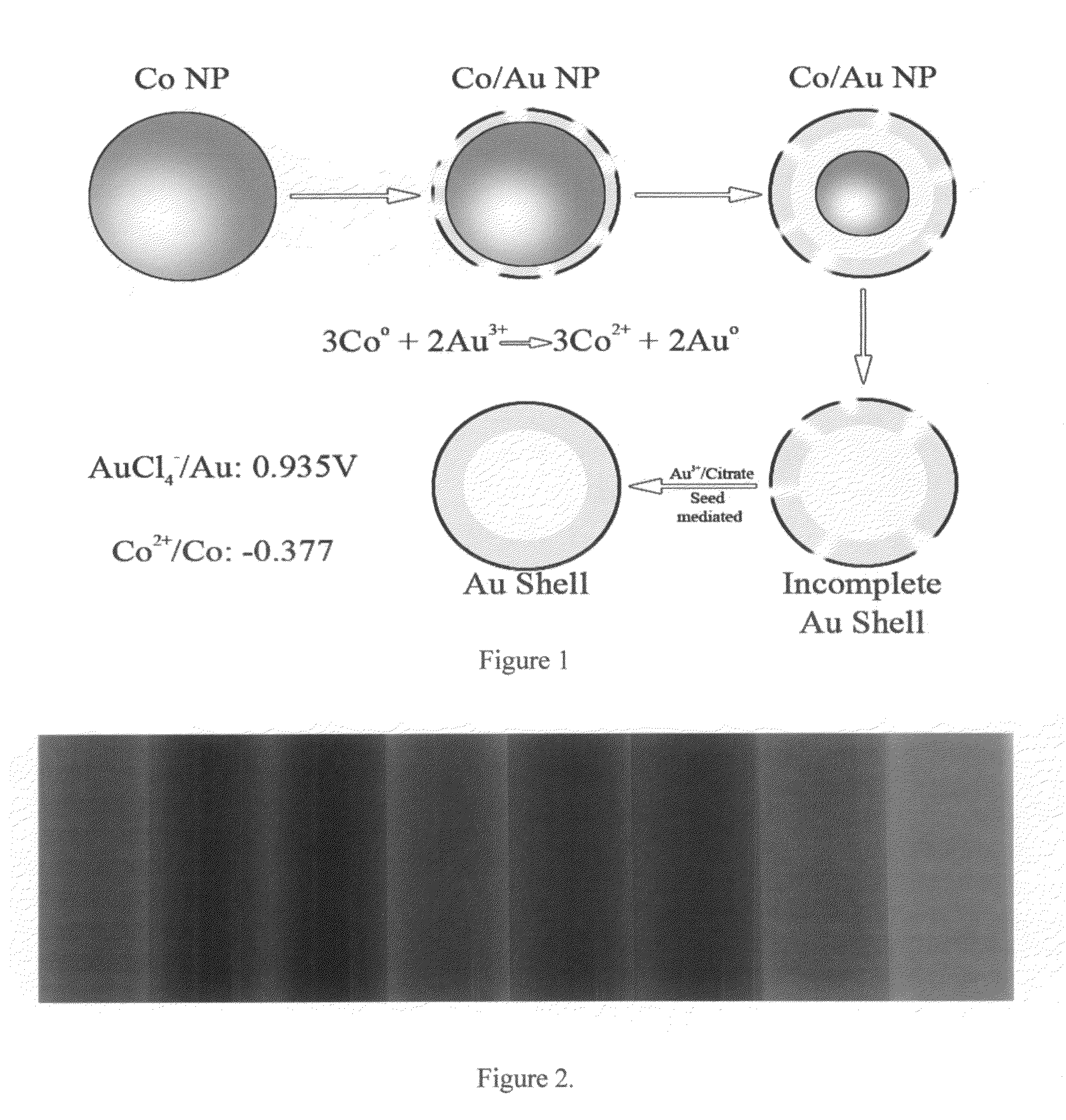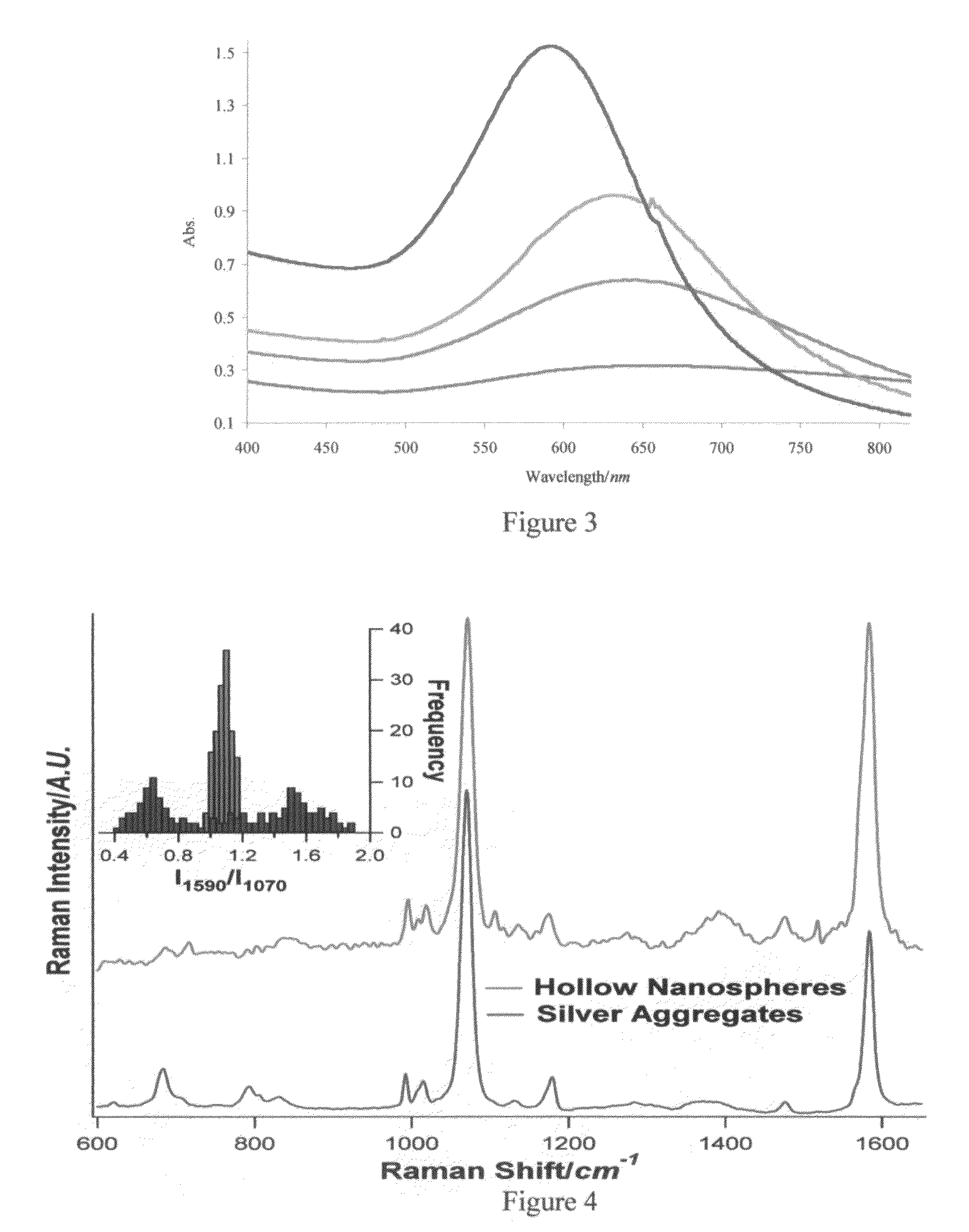Novel gold nanostructures and methods of use
a nano-structure and gold technology, applied in the field of metal structures, can solve the problems of limiting the access of some sub-cellular organelles, no one perceived the possibility of raman fiber pumping, and large nano-crescent and core shell systems, and achieves the effect of convenient use and low manufacturing cos
- Summary
- Abstract
- Description
- Claims
- Application Information
AI Technical Summary
Problems solved by technology
Method used
Image
Examples
examples
[0115]The invention will be more readily understood by reference to the following examples, which are included merely for purposes of illustration of certain aspects and embodiments of the present invention and not as limitations.
example i
Synthesis of Hollow Gold Nanospheres
[0116]HGNs were synthesized by first producing cobalt nanoparticles as templates. 100 ml of 18 MΩ water, 500 μl of 0.1 M aqueous sodium citrate (Aldrich), and 100 μl of 0.4 M aqueous CoCl2 (Aldrich) was degasses with nitrogen for 1 hour in a well sealed three neck flask. To this, 300 μl of a freshly prepared 1 M aqueous sodium borohydride (Aldrich) solution was added quickly. Hydrogen gas begins to form immediately and the solution turns from colourless to brown. The solution is allowed to stir under nitrogen for an additional 45 minutes to allow the sodium borohydride to completely react. While maintaining nitrogen flow, a 0.1 M aqueous chloroauric acid (Sigma-Aldrich, St. Louis, Mo.) solution is added in 50 μl aliquots to a final volume of 500 μl. The solution changes from brown, to red-purple, and is finally a deep blue color. Silver particles were synthesized by the method of Lee and Meisel (Lee, P. C.; Meisel, D., J. Phys. Chem. 1982, 86, 339...
example ii
Synthesis of Cobalt Nanoparticles
[0117]Cobalt nanoparticles were synthesized with the utmost attention paid to cleanliness and exclusion of air. All glassware was cleaned with alconox glassware detergent, then aquaregia to ensure the removal of all adsorbates, and then washed repeatedly with ultra-pure water. To ensure completely air free solutions, all solutions were vacuumed on a Schlink line until gas evolution ceased, then bubbled with ultra-pure argon for ten minutes. This process was repeated twice to remove as much oxygen as possible from the reaction vessel.
[0118]Fast addition of cobalt chloride. 100 ml of water was placed into a three neck flask with 100-800 μl of a 0.1 M solution of sodium citrate or citric acid and deairated. To this, 100-800 μl of a freshly made 1M sodium borohydride solution was added. With rapid magnetic stirring, 100 μl of a 0.4 M-0.6 M cobalt chloride solution was added. Hydrogen immediately evolves and the solution changes from pale pink to brown / gr...
PUM
| Property | Measurement | Unit |
|---|---|---|
| diameter | aaaaa | aaaaa |
| particle size | aaaaa | aaaaa |
| diameter | aaaaa | aaaaa |
Abstract
Description
Claims
Application Information
 Login to View More
Login to View More - R&D
- Intellectual Property
- Life Sciences
- Materials
- Tech Scout
- Unparalleled Data Quality
- Higher Quality Content
- 60% Fewer Hallucinations
Browse by: Latest US Patents, China's latest patents, Technical Efficacy Thesaurus, Application Domain, Technology Topic, Popular Technical Reports.
© 2025 PatSnap. All rights reserved.Legal|Privacy policy|Modern Slavery Act Transparency Statement|Sitemap|About US| Contact US: help@patsnap.com



